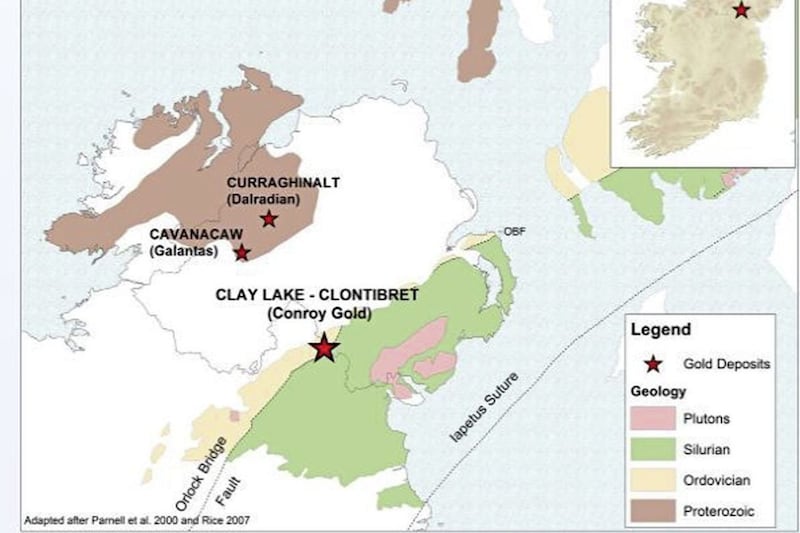DUBLIN-based Conroy Gold and Natural Resources has made what it claims to be a "potentially transformational" new gold discovery in south Armagh.
The AIM-listed exploration company confirmed in a stock market statement that it has discovered a new area of gold mineralisation while prospecting at it Mines Royal licensed area near Newtownhamilton, close to the company’s Clay Lake gold discovery.
It said "visible gold" was observed at two locations within the new discovery area.
Five quartz breccia samples located on or close to the surface returned the highest gold assay results since Conroy began exploration in a 65km stretch known as the Longford-Down Massif.
And a trenching and drilling programme will now take place to follow up on the discovery and to enable the company to better assess and understand the mineralisation in the area.
“This new discovery is potentially a transformational event for gold exploration and development in
this very large gold district," according to Professor Richard Conroy, founder and now chairman of the company, whose exploration activities are focused on Ireland and Finland.
“The presence of visible gold and the outstanding gold grades of up to 123g/t gold (4oz/t gold) in these initial samples are exceptional.
“And taken in conjunction with our other significant discoveries, it indicates the potential for this district to become a Tier 1 gold area."
Exactly a year ago the company entered a joint venture agreement with Demir Export, Turkey's largest industrial and commercial mining organisation, to do a deep drill of Conroy's licensed area at Clontibet near the border.
For more than 20 years Conroy Gold and Natural Resources has been looking to develop a gold mine along a near 50-mile stretch straddling the border, and the company has prospecting licences for huge swathes of the area, including Clay Lake, near Keady.
Professor Conroy previously said Clay Lake - best known by fishermen for its perch, pike and rudd - could potentially be one of the biggest untapped gold mines in Britain or Ireland.
He hinted that a mine there may be worth hundreds of millions of pounds, and previous discoveries there "could be the jewel in the crown for our company".
The gold potential in that area emerged in the 1980s when a farmer found a 28 grammes gold nugget in a local stream bed near Clay Lake. It now lies in the Ulster Museum.








